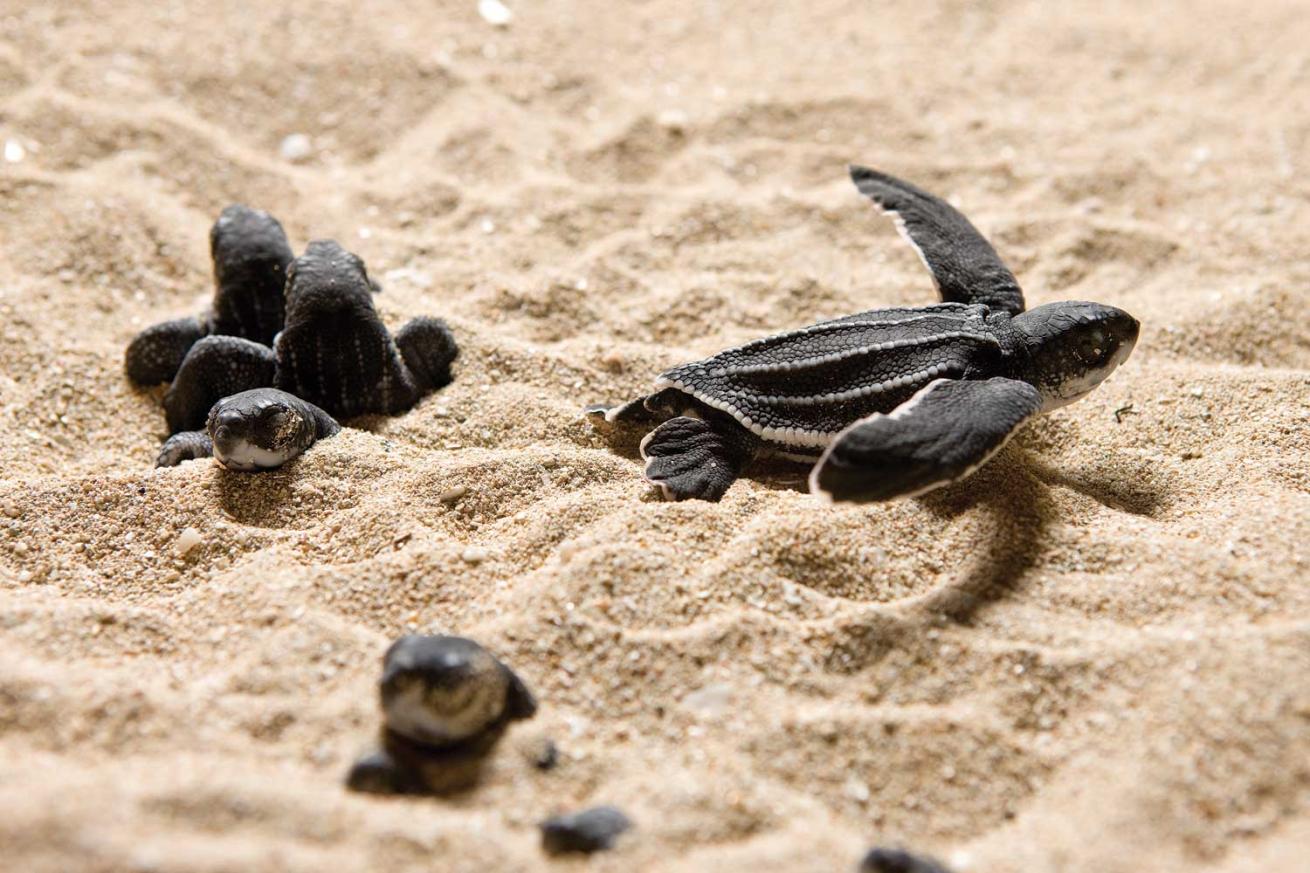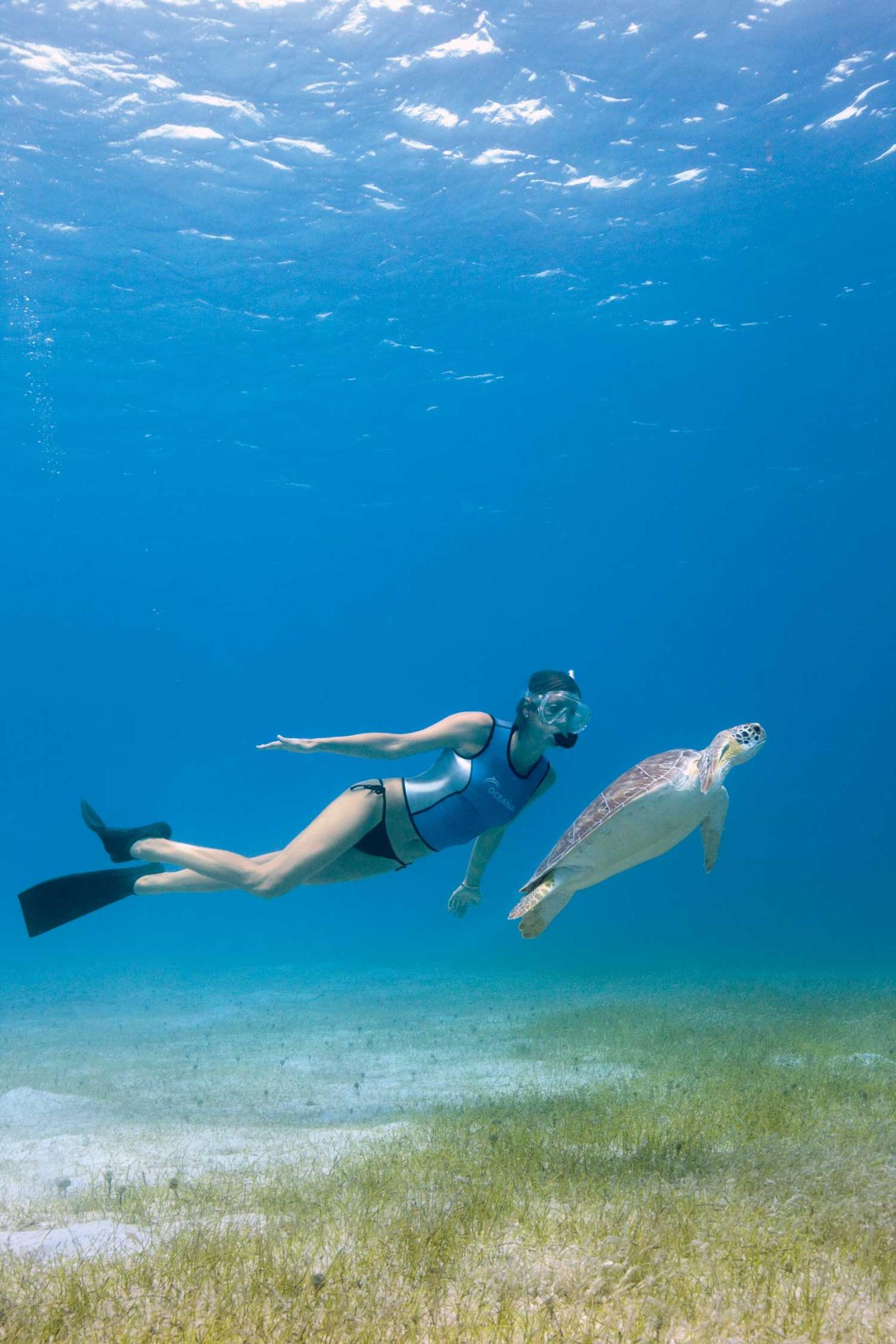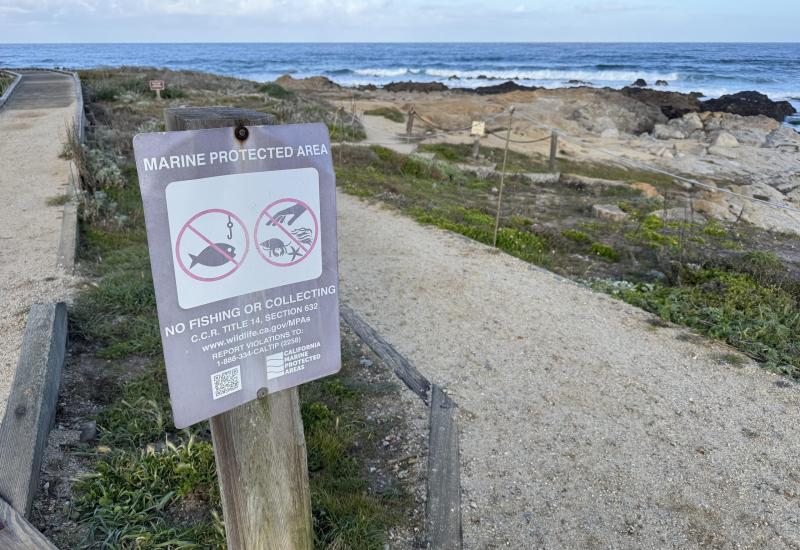Video: Project Turtle Rescue

By KerriLynn Miller, Oceana Marine Science Fellow Buck Island is an uninhabited 45-acre patch of cactus-studded grassland just south of St. Thomas in the Caribbean. The waters surrounding the island teem with some of the northern hemisphere’s most vibrant coral reefs and seagrass beds, ideal habitats for green sea turtles. This past summer, a pair of greens grazed and swam peacefully, mostly ignoring a free diver in their midst. The diver was actress Kate Walsh of Private Practice and Grey’s Anatomy. Walsh had traveled with Oceana to Buck Island National Wildlife Refuge to produce a public-service-announcement campaign about the threats facing sea turtles.
“I think most people don’t know green turtles are an endangered species,” said Walsh. “I want them to be around for many generations to come. And I think that if more people know what’s specifically happening –– that fishing gear is catching and killing sea turtles –– they can take action to prevent it.” All species of sea turtles play an important role in the ecosystem, and provide economic and cultural benefits to local communities in the United States and abroad. Their vulnerability has been recognized by the more than 30 years of protection under the Endangered Species Act. But the ESA isn’t enough, as all six sea turtles species that swim in U.S. waters –– including the green sea turtle –– are still threatened or endangered with extinction, with many populations declining despite the protection. Sea turtle populations are notoriously hard to estimate because the animals are so wide-ranging and only the adult females come ashore to nest. But there is no doubt that populations have been in steep decline in many places around the globe. According to the International Union for Conservation of Nature — which put green sea turtles on its Red List of Threatened Species in 2002 — green sea turtles have declined by at least 37 percent, and possibly more than 70 percent, in the past 140 years. In 2008, Oceana published a survey conducted with Duke University detailing divers’ economic incentive to protect living ocean resources. More than three-quarters of the surveyed scuba divers from the U.S. were willing to pay an additional fee in return for an increased chance of seeing a sea turtle in the wild. On average, those divers indicated they would pay an additional $29.63 per dive. That’s a potential $177.8 million economic impact across the nation’s estimated 1.2 million active scuba divers. So why are sea turtles in such trouble? The odds are against these ancient creatures, which have inhabited the oceans for more than 100 million years. Habitat loss, coastal development and pollution are common factors. Most divers already know that sea turtles can mistake plastic bags for jellyfish. One study found that 15 percent of loggerheads examined had ingested enough plastic to block their normal digestive functions. Few people realize, however, the large role fishing gear plays in decimating sea turtle populations. Trawls and scallop dredges kill thousands of sea turtles every year –– despite the fact that turtles are protected under the ESA. Longlines and driftnets, which stretch for miles, are equally deadly for sea turtles. With little regulation and less enforcement, the problem is compounded in international waters. Oceana has stepped forward to reduce one of the greatest threats to sea turtle survival — incidental catch in fishing gear, known as bycatch. The good news is there are easy gear modifications that can cut down the numbers of sea turtles accidentally killed by fishermen. Trawlers can install a kind of escape hatch, known as a Turtle Excluder Device, which has a 97 percent success rate for sea turtle survival, and is already required in some shrimp and summer flounder fisheries. Using hooks with a G shape instead of the traditional J shape on longlines can spare many sea turtles. Even a simple change of bait from squid to fish can reduce the number of turtles accidentally killed. In addition, restricting fishery operations during certain times and areas when sea turtles are present can go a long way toward saving the turtles. Oceana is working with members of Congress to advance a comprehensive U.S. sea turtle legislation to ensure sea turtles will be able to escape extinction. This legislation would make sure human interactions with sea turtles are kept at a level that would allow populations to recover. It would also improve research and management of sea turtles, require the use of a TED in all trawl fisheries operating in areas with turtles, and protect important habitat areas on land and in the water. Designating more critical habitats for sea turtles is vital to their survival, because it will provide the protections they need to thrive in those areas. Since no critical habitat exists for sea turtles in the continental U.S., Oceana recently petitioned the U.S. government to designate critical habitat for Pacific leatherback and western North Atlantic loggerhead sea turtles, which also need to be safeguarded. That is what brought Walsh to Buck Island with Oceana –– to learn about the threats facing sea turtles. She hopes her efforts with Oceana will help raise awareness that sea turtles’ troubles don’t stop with nesting beach loss and pollution. “I want to get the word out and make people aware about the challenges facing sea turtles,” she said. “I also want to help get legislation enacted to keep harmful fishing techniques to a minimum and help protect the sea turtles.”
Save Sea Turtles — Here’s How
- Become an Oceana Wavemaker at oceana.org/join and receive updates on how to help protect sea turtles.
- If you visit the beach during sea turtle nesting season, turn off your lights or close your shades at night to keep from disorienting hatchling sea turtles.
- Use fewer plastic bags. In addition to fouling up the oceans, sea turtles might mistake them for jellyfish, one of their favorite foods.
- Sign a petition asking Congress to pass comprehensive sea turtle protection legislation. Visit oceana.org/turtlesoffthehook.

By KerriLynn Miller, Oceana Marine Science Fellow Buck Island is an uninhabited 45-acre patch of cactus-studded grassland just south of St. Thomas in the Caribbean. The waters surrounding the island teem with some of the northern hemisphere’s most vibrant coral reefs and seagrass beds, ideal habitats for green sea turtles. This past summer, a pair of greens grazed and swam peacefully, mostly ignoring a free diver in their midst. The diver was actress Kate Walsh of Private Practice and Grey’s Anatomy. Walsh had traveled with Oceana to Buck Island National Wildlife Refuge to produce a public-service-announcement campaign about the threats facing sea turtles.
“I think most people don’t know green turtles are an endangered species,” said Walsh. “I want them to be around for many generations to come. And I think that if more people know what’s specifically happening –– that fishing gear is catching and killing sea turtles –– they can take action to prevent it.” All species of sea turtles play an important role in the ecosystem, and provide economic and cultural benefits to local communities in the United States and abroad. Their vulnerability has been recognized by the more than 30 years of protection under the Endangered Species Act. But the ESA isn’t enough, as all six sea turtles species that swim in U.S. waters –– including the green sea turtle –– are still threatened or endangered with extinction, with many populations declining despite the protection. Sea turtle populations are notoriously hard to estimate because the animals are so wide-ranging and only the adult females come ashore to nest. But there is no doubt that populations have been in steep decline in many places around the globe. According to the International Union for Conservation of Nature — which put green sea turtles on its Red List of Threatened Species in 2002 — green sea turtles have declined by at least 37 percent, and possibly more than 70 percent, in the past 140 years. In 2008, Oceana published a survey conducted with Duke University detailing divers’ economic incentive to protect living ocean resources. More than three-quarters of the surveyed scuba divers from the U.S. were willing to pay an additional fee in return for an increased chance of seeing a sea turtle in the wild. On average, those divers indicated they would pay an additional $29.63 per dive. That’s a potential $177.8 million economic impact across the nation’s estimated 1.2 million active scuba divers. So why are sea turtles in such trouble? The odds are against these ancient creatures, which have inhabited the oceans for more than 100 million years. Habitat loss, coastal development and pollution are common factors. Most divers already know that sea turtles can mistake plastic bags for jellyfish. One study found that 15 percent of loggerheads examined had ingested enough plastic to block their normal digestive functions. Few people realize, however, the large role fishing gear plays in decimating sea turtle populations. Trawls and scallop dredges kill thousands of sea turtles every year –– despite the fact that turtles are protected under the ESA. Longlines and driftnets, which stretch for miles, are equally deadly for sea turtles. With little regulation and less enforcement, the problem is compounded in international waters. Oceana has stepped forward to reduce one of the greatest threats to sea turtle survival — incidental catch in fishing gear, known as bycatch. The good news is there are easy gear modifications that can cut down the numbers of sea turtles accidentally killed by fishermen. Trawlers can install a kind of escape hatch, known as a Turtle Excluder Device, which has a 97 percent success rate for sea turtle survival, and is already required in some shrimp and summer flounder fisheries. Using hooks with a G shape instead of the traditional J shape on longlines can spare many sea turtles. Even a simple change of bait from squid to fish can reduce the number of turtles accidentally killed.

In addition, restricting fishery operations during certain times and areas when sea turtles are present can go a long way toward saving the turtles. Oceana is working with members of Congress to advance a comprehensive U.S. sea turtle legislation to ensure sea turtles will be able to escape extinction. This legislation would make sure human interactions with sea turtles are kept at a level that would allow populations to recover. It would also improve research and management of sea turtles, require the use of a TED in all trawl fisheries operating in areas with turtles, and protect important habitat areas on land and in the water. Designating more critical habitats for sea turtles is vital to their survival, because it will provide the protections they need to thrive in those areas. Since no critical habitat exists for sea turtles in the continental U.S., Oceana recently petitioned the U.S. government to designate critical habitat for Pacific leatherback and western North Atlantic loggerhead sea turtles, which also need to be safeguarded. That is what brought Walsh to Buck Island with Oceana –– to learn about the threats facing sea turtles. She hopes her efforts with Oceana will help raise awareness that sea turtles’ troubles don’t stop with nesting beach loss and pollution. “I want to get the word out and make people aware about the challenges facing sea turtles,” she said. “I also want to help get legislation enacted to keep harmful fishing techniques to a minimum and help protect the sea turtles.”
Save Sea Turtles — Here’s How
- Become an Oceana Wavemaker at oceana.org/join and receive updates on how to help protect sea turtles.
- If you visit the beach during sea turtle nesting season, turn off your lights or close your shades at night to keep from disorienting hatchling sea turtles.
- Use fewer plastic bags. In addition to fouling up the oceans, sea turtles might mistake them for jellyfish, one of their favorite foods.
- Sign a petition asking Congress to pass comprehensive sea turtle protection legislation. Visit oceana.org/turtlesoffthehook.











